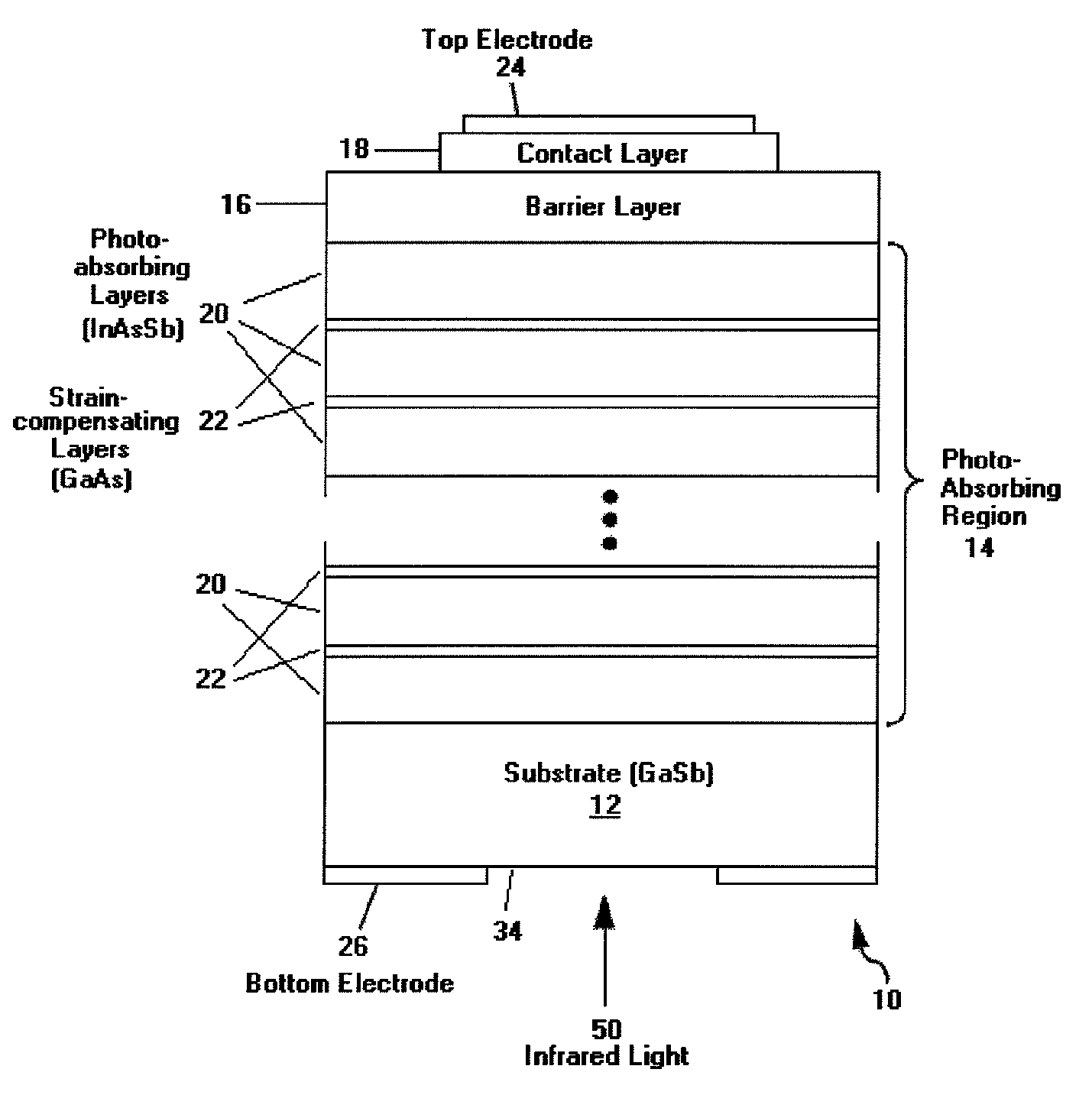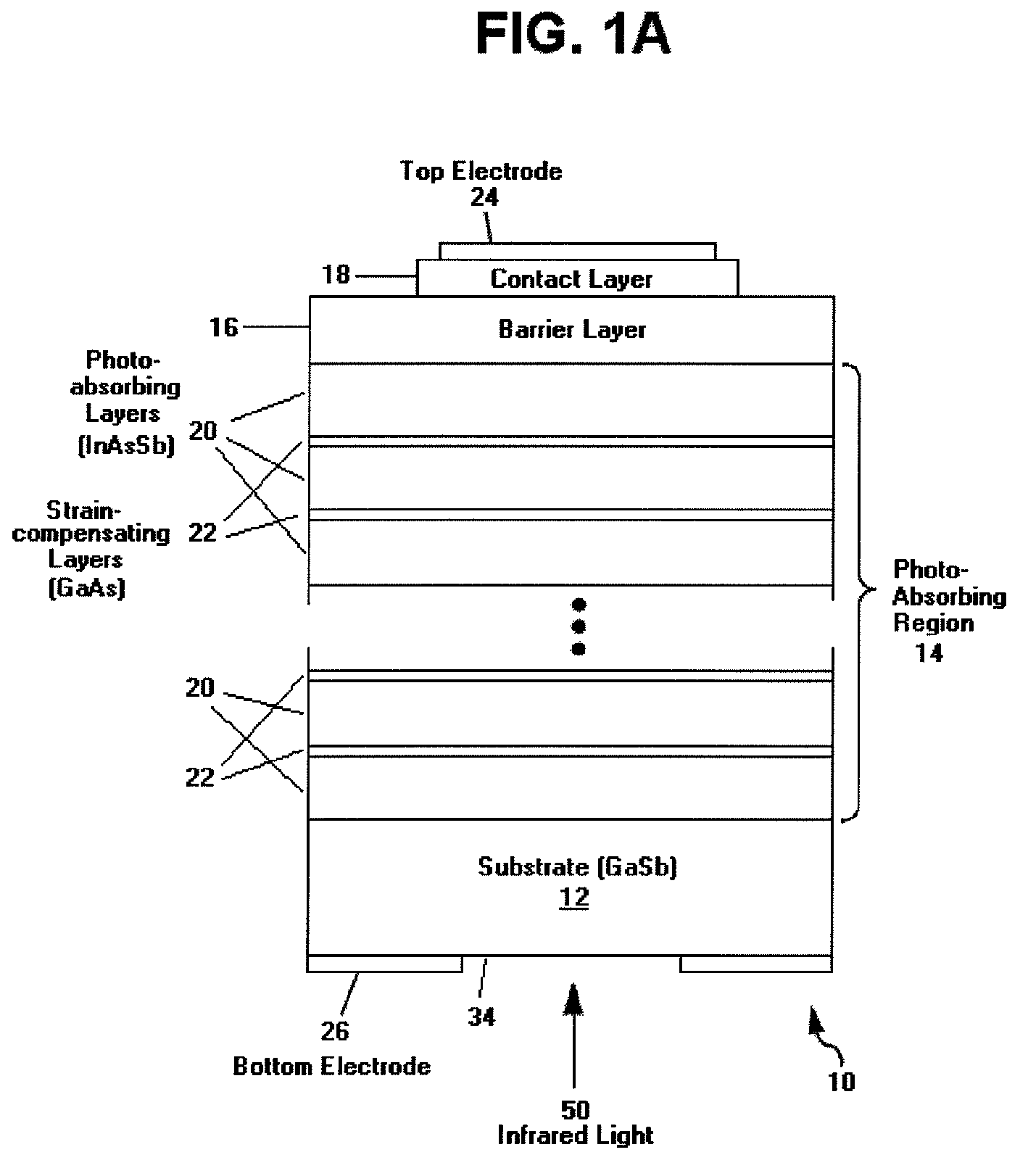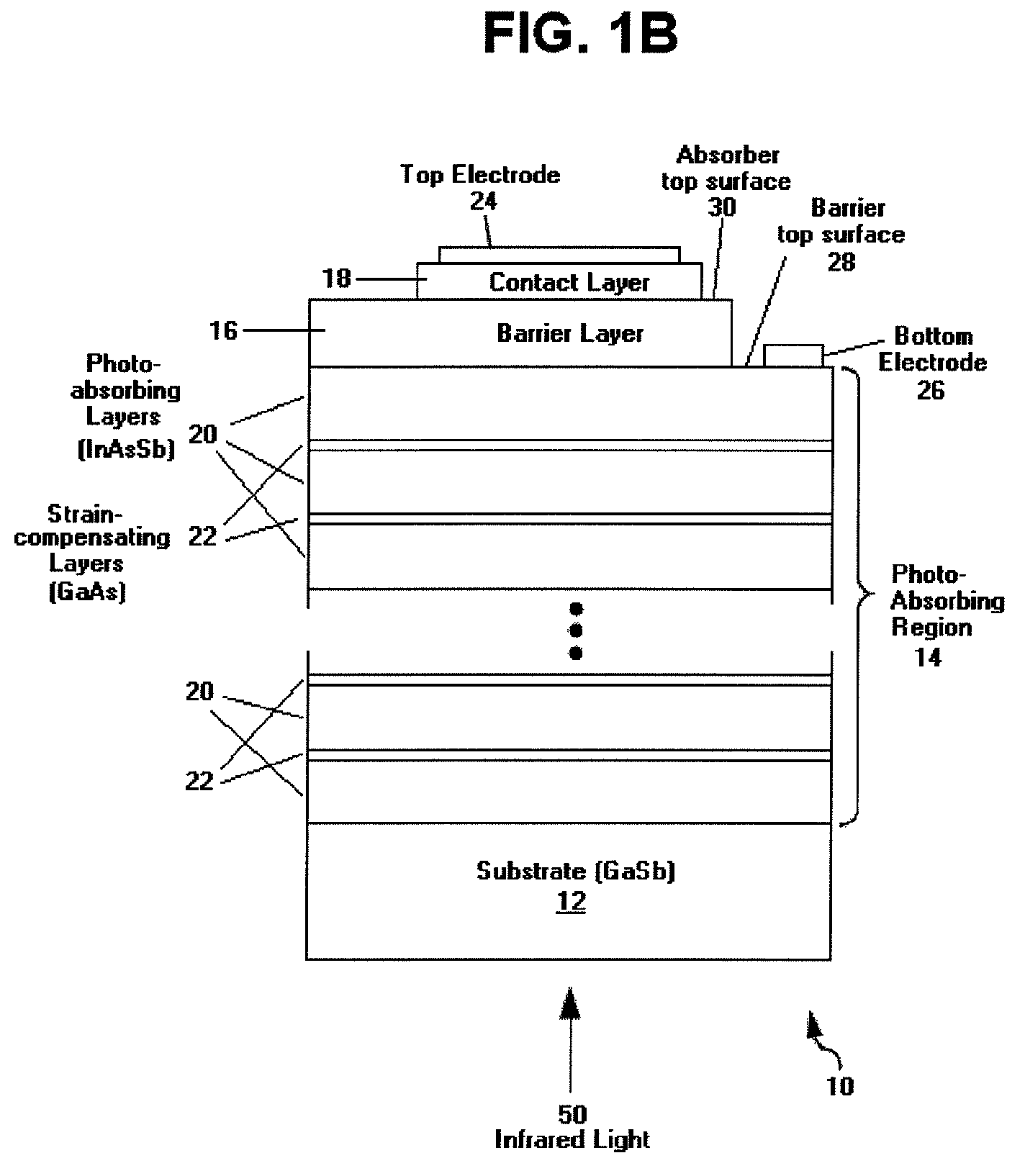Extended wavelength digital alloy NBN detector
a digital alloy and detector technology, applied in the field of photodetectors, can solve the problems of high cost, high energy consumption, and high cost, and achieve the effects of short cutoff wavelength, reasonable quantum efficiency, and different lattice constan
- Summary
- Abstract
- Description
- Claims
- Application Information
AI Technical Summary
Benefits of technology
Problems solved by technology
Method used
Image
Examples
Embodiment Construction
[0057]The following detailed description of the invention refers to the accompanying drawings. The same reference numbers in different drawings identify the same or similar elements. Also, the following detailed description does not limit the invention. Instead, the scope of the invention is defined by the appended claims and equivalents thereof.
[0058]FIG. 1A shows a schematic cross-section view of an exemplary embodiment of a photodetector 10 of the present invention. Photodetector 10 comprises a semiconductor substrate 12 on which a plurality of III-V compound semiconductor layers are epitaxially grown to form a photo-absorbing region 14, a barrier layer 16, and a contact layer 18. The photo-absorbing region 14 (i.e. absorber, photo-absorber, absorber layer) comprises a plurality of strain-compensating layers 22 which are alternatingly interspersed between a plurality of photo-absorbing layers 20. In addition, a top electrode 24 is located above the contact layer 18 and a bottom e...
PUM
 Login to View More
Login to View More Abstract
Description
Claims
Application Information
 Login to View More
Login to View More - R&D
- Intellectual Property
- Life Sciences
- Materials
- Tech Scout
- Unparalleled Data Quality
- Higher Quality Content
- 60% Fewer Hallucinations
Browse by: Latest US Patents, China's latest patents, Technical Efficacy Thesaurus, Application Domain, Technology Topic, Popular Technical Reports.
© 2025 PatSnap. All rights reserved.Legal|Privacy policy|Modern Slavery Act Transparency Statement|Sitemap|About US| Contact US: help@patsnap.com



